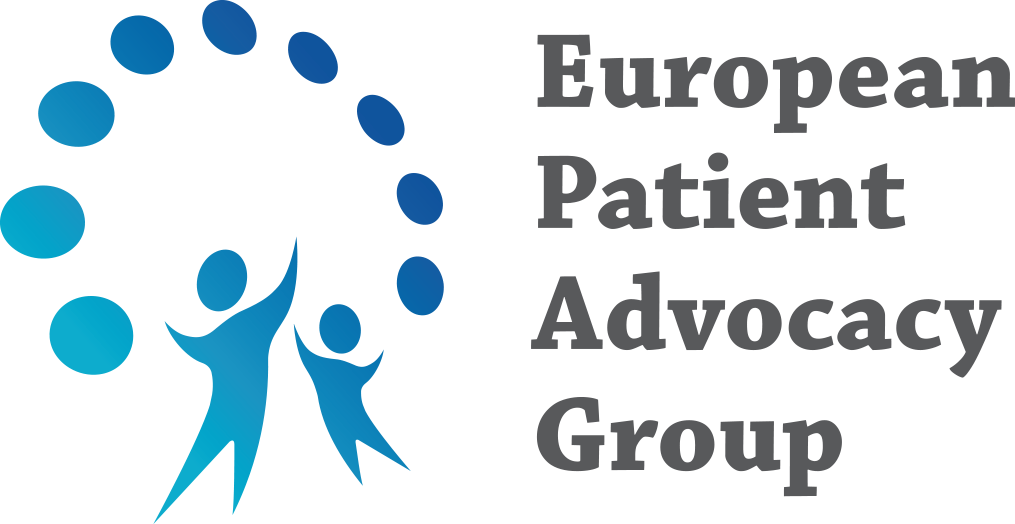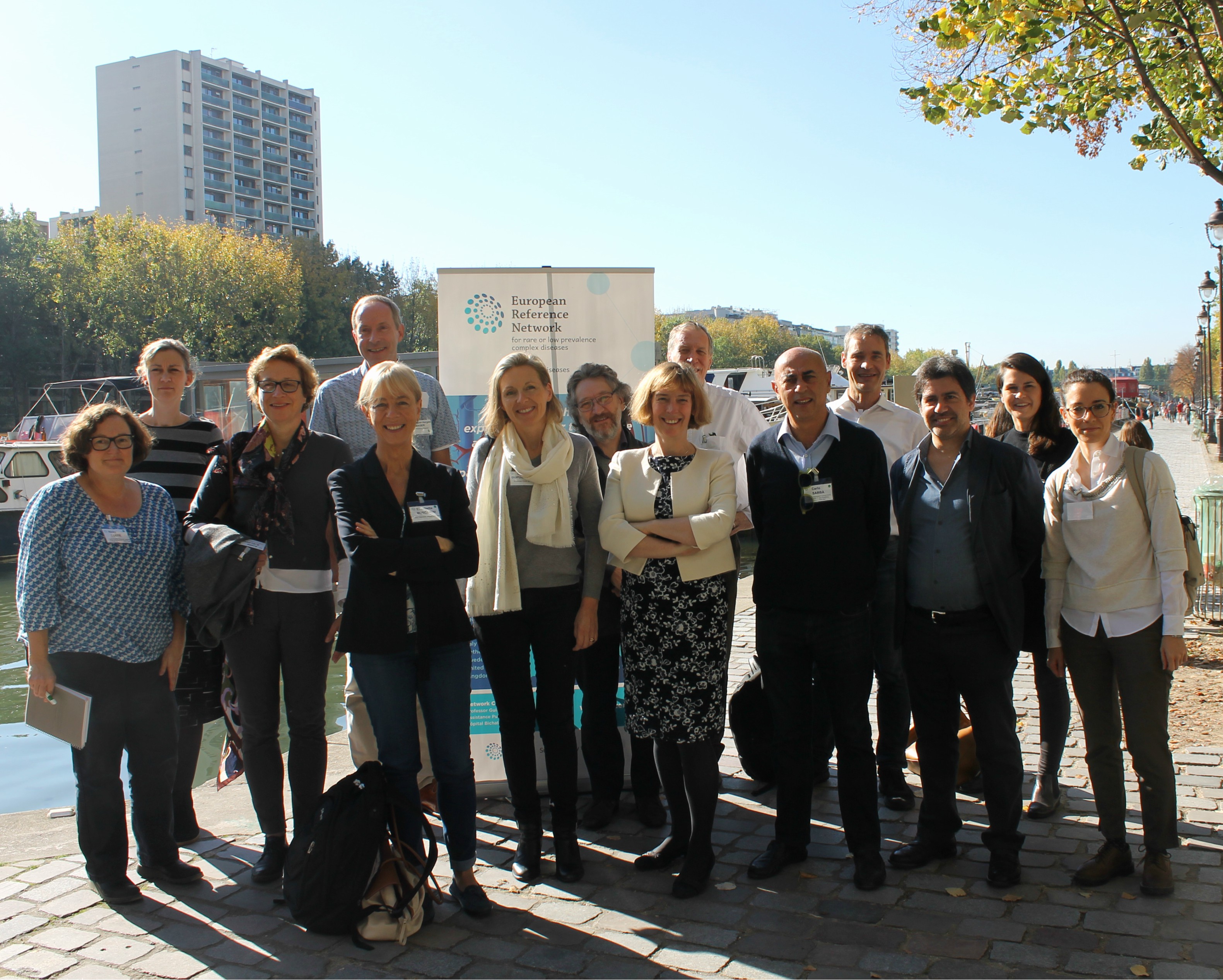

The Hereditary Haemorrhagic Telangiectasia Working Group (HHT WG) is one of the five Rare Disease Working Groups (RDWGs) of VASCERN that specialize in a particular type/group of rare vascular disease(s).
The HHT-WG is chaired by Dr. Sophie DUPUIS-GIROD from the HHT Center of Reference in Lyon, France, and Co-chaired by Professor Elisabetta BUSCARINI, from the HHT Center at Maggiore Hospital in Crema, Italy.
These chairs, and the majority of the Working Group as well as Centers cooperating with the HHT-WG have been longstanding members of the Global Research and Medical Advisory Board (GRMAB) of the HHT Foundation International (now Cure HHT) with Hans-Jurgen MAGER the current GRMAB Vice Chair and we continue our warm collaborations with non-European HHT Colleagues.
The VASCERN HHT-WG cooperates with the European Patient Advocacy (ePAG), whose representative participating to the WG is ePAG Co-Chair for HHT Claudia CROCIONE (HHT Europe) and ePAG Deputy Co-Chair Christina Grabowski (Morbus Osler, HHT Germany)
The HHT-WG is a distinct entity because in the more than 25 years that the Partners have been working together, there has been little professional need to overlap with our colleagues and friends in the Vascular Anomalies Working Group (VASCA-WG), although we now have occasional joint sessions at VASCERN Days.
Hereditary haemorrhagic telangiectasia (HHT) was defined by the VASCERN HHT working group in 2019 for ORPHANET (see here). HHT is a single, relatively common “Rare” Vascular Disease with distinct screening and management recommendations. Abnormal vascular structures occur non randomly, and are responsible for complications: currently used treatments are symptomatic and not pathophysiological. Unlike the other ERN components, the clinical phenotype is dominated by the consequences of chronic bleeding from the abnormal vascular structures; paradoxical emboli through pulmonary arteriovenous malformations AVMs; and the wider circulatory consequences due to systemic AVMs, in turn exacerbated by anaemia and low oxygen levels.
Thus, HHT may require management from almost all specialist groupings. Small (telangiectasia) lead to nosebleeds (epistaxis), gastrointestinal bleeding and iron deficiency anaemia. Large arteriovenous malformations (AVMs) in pulmonary, hepatic, and cerebral circulations may hemorrhage; pulmonary AVMs cause preventable ischemic strokes, cerebral abscesses, and hypoxaemia; and systemic AVMs demand higher cardiac outputs aggravated by iron deficiency and/or hypoxaemia. 1 in 100 women die in pregnancy, and the SMAD4 subgroup (~2%) are also at risk of aortic rupture, juvenile polyposis and GI cancers. Paradoxically, where managed appropriately, life expectancy can be very good indeed, with likely explanations including apparent protection from certain cancers, and myocardial infarctions.
The clinical diagnosis of HHT is based on the Curaçao criteria Shovlin et al, 2000. Molecular diagnosis is available for the ACVRL1 (ALK1), ENG, and SMAD4 pathogenic variants (“mutations”) are found in over 90% of patients with a definite clinical diagnosis.
Bases for the estimated incidence and prevalence numbers: 500 Million inhabitants within European union with about 6 million newborns annually.
| sub-thematic areas of expertise | Rare or complex disease(s) or condition(s) or highly specialized interventions | Code/ICD/ Orphacode / Group of Codes | Incidence (Number of cases / year) (in the EU) | Prevalence (in the EU) |
|---|---|---|---|---|
| HHT | Hereditary Haemorrhagic Telangiectasia | ICD-10: I78.0 ORPHA774 | 1000 | estimated to be 1/6000 (83 000 patients) |

FRANCE
CHU de Lyon HCL, GH Est-Hôpital Femme Mère Enfant
Lyon, France
VASCERN HHT European Reference Centre, CRMR Rendu-Osler


ITALY
Azienda Ospedaliero-Universitaria Consorziale di Bari Policlinico-Giovanni XXIII, Bari, Italy
VASCERN HHT European Reference Centre


ePAG Co-Chair
Claudia CROCIONE

DENMARK

GERMANY
Essen University Hospital, Essen, Germany
VASCERN HHT European Reference Centre – Essen Center for Rare Diseases


ePAG Deputy Co-Chair
Christina GRABOWSKI
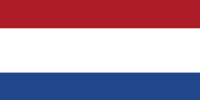
NETHERLANDS
St. Antonius Hospital, Nieuwegein, The Netherlands
VASCERN HHT European Reference Centre –Dutch HHT expertise center

Pills of Knowledge (PoK)
Pills of Knowledge (PoK) are the deliverable for VASCERN Work Package 4 on Pills of Knowledge, defined as short single video lessons (of approximately 3-5 minutes long) in which an expert talks about a specific topic that has been selected and validated by the Rare Disease Working Groups (RDWGs).
HHT-WG Pills of Knowledge videos playlist here
Hereditary Haemorrhagic Telangiectasia (HHT) from VASCERN HHT
This video introduces HHT, the HHT-WG and their expertise in this rare vascular disease. This is a welcoming first entry for people learning about HHT for the first time. Common problems of HHT are presented. The video also presents the data derived over more than 30 years by HCP Leads within VASCERN HHT that indicates life expectancy in HHT is remarkably good, provided that patients are properly screened and receive the benefits of modern medicine. This video is mainly directed at HHT patients but is also of interest to the medical community and the general public wishing to learn more about HHT and the HHT-WG in VASCERN. Video in English. Subtitles available in 7 languages (English, Dutch, Danish, French, Italian, German and Spanish).
An Overview of Hereditary Haemorrhagic Telangiectasia features an informative presentation by Prof Claire Shovlin (Chair of the HHT WG from Hammersmith Hospital – Imperial College Healthcare NHS Trust, UK). This PoK is accessible to everyone and gives viewers an introduction to HHT by explaining its main clinical features (and their frequency) in addition to the genetics and aetiology of this rare disease.
Video in English. Subtitles available in 7 languages (English, Dutch, Danish, French, Italian, German and Spanish).
Hereditary Haemorrhagic Telangiectasia (HHT) is more than a bleeding Nose. What an ENT doctor needs to know about HHT and why, is made by Prof Anette Kjeldsen (HHT-WG Member, from the HHT Centre at Odense University Hospital, Denmark) and is intended for Ear, Nose & Throat (ENT) Doctors in order to help them properly recognize the signs and symptoms of HHT. As ENT doctors are often the first healthcare professionals that HHT patients consult, it is essential for them to be able to identify a potential HHT patient and refer these patients to an HHT expert Centre for screening and treatment in order to decrease patient morbidity.
Video in English.
Webinars
VASCERN Webinar: HHT and the lungs
This webinar consists of a informative presentation followed by an interactive Q&A session. Involving clinicians and patient advocates from our Hereditary Haemorrhagic Telangiectasia Working Group (HHT-WG): Dr. Hans-Jurgen Mager, Prof. Marco Post, Claudia Crocione, Christina Grabowski and Ria Blom.
Video in English.
VASCERN Webinar: HHT and Nosebleeds
This webinar consists of a informative presentation followed by an interactive Q&A session. Involving clinicians and patient advocates from our Hereditary Haemorrhagic Telangiectasia Working Group (HHT-WG): Prof Anette KJELDSEN , Prof Urban GEISTHOFF, Dr Freya DROEGE, Dr Ruben HERMANN, Christina GRABOWSKI.
Video in English.
Training Workshops given by HHT WG members
12th HHT International Conference Workshops Dubrovnik, June 2017
Workshop on Management of Hepatic AVMs – (DUPUIS-GIROD & BUSCARINI)
Workshop on Inflammation, Immunity and Injury in HHT – (SHOVLIN & BOTELLA)
Patient Pathways aim to improve the care and management of patients with a rare disease. They include the “red flags” that may lead to the suspicion of the disease, how to reach a definite diagnosis and the management and follow-up recommendations. They are a very important tool used in defining the best patient care and will be further validated and updated when needed.
The HHT Patient Pathway (issued 11/07/2017) is available here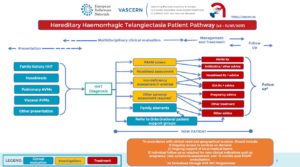
This pathway has also kindly been translated in French by FAVA-Multi:
![]() Le parcours patient de la maladie de Rendu-Osler ici
Le parcours patient de la maladie de Rendu-Osler ici
- Diagnostic criteria for hereditary hemorrhagic telangiectasia (Rendu‐Osler‐Weber syndrome)-Shovlin CL, Guttmacher AE, Buscarini E, Faughnan ME, Hyland RH, Westermann CJ, Kjeldsen AD, Plauchu H. Am J Med Genet 2000 ( >990 citations).
- Liver involvement in hereditary hemorrhagic telangiectasia: consensus recommendations.Buscarini E, Plauchu H, Garcia Tsao G, White RI Jr, Sabbà C, Miller F, Saurin JC, Pelage JP, Lesca G, Marion MJ, Perna A, Faughnan ME. Liver Int. 2006 (>100 citations).
- HHT Foundation International – Guidelines Working Group. International guidelines for the diagnosis and management of hereditary haemorrhagic telangiectasia. Faughnan ME, Palda VA, Garcia-Tsao G, Geisthoff UW, McDonald J, Proctor DD, Spears J, Brown DH, Buscarini E, Chesnutt MS, Cottin V, Ganguly A, Gossage JR, Guttmacher AE, Hyland RH, Kennedy SJ, Korzenik J, Mager JJ, Ozanne AP, Piccirillo JF, Picus D, Plauchu H, Porteous ME, Pyeritz RE, Ross DA, Sabba C, Swanson K,Terry P, Wallace MC, Westermann CJ, White RI, Young LH, Zarrabeitia R; J Med Genet. 2011(>350 citations)
- European Association for Liver Studies – Clinical Practice guidelines: Vascular diseases of the liver. Garcia-Pagan, Buscarini E Janssen, Leebeek F, Plessier, Rubbia Brandt, Senzolo, Shouten, Tripodi. J Hepatol 2016. (already cited)
- European Reference Network For Rare Vascular Diseases (VASCERN) Outcome Measures For Hereditary Haemorrhagic Telangiectasia (HHT). Shovlin CL1,2, Buscarini E3, Kjeldsen AD4, Mager HJ5, Sabba C6, Droege F7, Geisthoff U7,8, Ugolini S9, Dupuis-Girod S10,11. Haematologica. 2019 Feb;104(2):e85-e86. doi: 10.3324/haematol.2018.209791.
- Claire SHOVLIN (UK), Saverio ALICANTE (Italy), Luisa BOTELLA (Spain), Nicky COOTE (UK), Claudia CROCIONE (Italy), Freya DROEGE (Germany), Didier ERASME (France), Anette KJELDSEN (Denmark), David LEFROY (UK), Gennaro Mariano LENATO (Italy), Hans-Jurgen MAGER (The Netherlands), Marco POST (The Netherlands), Carlo SABBÀ (Italy), Patrizia SUPPRESSA (Italy) ; Ulrich SURE (Germany), Pernille TØRRING (Denmark), Sara UGOLINI (Italy), Elisabetta BUSCARINI (Italy)*, and Sophie DUPUIS-GIROD (France)* Hereditary Haemorrhagic Telangiectasia. Orphanet Encyclopedia for Professionals
- Shovlin C, Bamford K, Sabbà C, Mager HJ, Kjeldsen A, Droege F, Buscarini E, Dupuis-Girod S; VASCERN HHT. Prevention of serious infections in hereditary hemorrhagic telangiectasia: roles for prophylactic antibiotics, the pulmonary capillaries-but not vaccination. Haematologica. 2019 Feb;104(2):e85-e86. doi: 10.3324/haematol.2018.209791.
- Buscarini E, Botella LM, Geisthoff U, Kjeldsen AD, Mager HJ, Pagella F, Suppressa P, Zarrabeitia R, Dupuis-Girod S, Shovlin CL; VASCERN-HHT. Safety of thalidomide and bevacizumab in patients with hereditary hemorrhagic telangiectasia. Orphanet J Rare Dis. 2019 Feb 4;14(1):28. doi: 10.1186/s13023-018-0982-4. PMID: 30717761
- Safety of direct oral anticoagulants in patients with hereditary hemorrhagic telangiectasia. Shovlin CL, Millar CM, Droege F, Kjeldsen A, Manfredi G, Suppressa P, Ugolini S, Coote N, Fialla AD, Geisthoff U, Lenato GM, Mager HJ, Pagella F, Post MC, Sabbà C, Sure U, Torring PM, Dupuis-Girod S, Buscarini E; VASCERN-HHT. Orphanet J Rare Dis. 2019 Aug 28;14(1):210. doi: 10.1186/s13023-019-1179-1.
Guideline adopted in 2020
- Second International Guidelines for the Diagnosis and Management of Hereditary Hemorrhagic Telangiectasia. Faughnan ME, Mager JJ, Hetts SW, Palda VA, Lang-Robertson K, Buscarini E, Deslandres E, Kasthuri RS, Lausman A, Poetker D, Ratjen F, Chesnutt MS, Clancy M, Whitehead KJ, Al-Samkari H, Chakinala M, Conrad M, Cortes D, Crocione C, Darling J, de Gussem E, Derksen C, Dupuis-Girod S, Foy P, Geisthoff U, Gossage JR, Hammill A, Heimdal K, Henderson K, Iyer VN, Kjeldsen AD, Komiyama M, Korenblatt K, McDonald J, McMahon J, McWilliams J, Meek ME, Mei-Zahav M, Olitsky S, Palmer S, Pantalone R, Piccirillo JF, Plahn B, Porteous MEM, Post MC, Radovanovic I, Rochon PJ, Rodriguez-Lopez J, Sabba C, Serra M, Shovlin C, Sprecher D, White AJ, Winship I, Zarrabeitia R.Ann Intern Med. 2020 Dec 15;173(12):989-1001. doi: 10.7326/M20-1443. Epub 2020 Sep 8.PMID: 3289469
The following Clinical expert consensus statements have been written by the VASCERN HHT WG:
- European Reference Network For Rare Vascular Diseases (VASCERN) Outcome Measures For Hereditary Haemorrhagic Telangiectasia (HHT). Shovlin CL1,2, Buscarini E3, Kjeldsen AD4, Mager HJ5, Sabba C6, Droege F7, Geisthoff U7,8, Ugolini S9, Dupuis-Girod S10,11. Haematologica. 2019 Feb;104(2):e85-e86. doi: 10.3324/haematol.2018.209791.
- European Reference Network for Rare Vascular Diseases (VASCERN) position statement on cerebral screening in adults and children with hereditary haemorrhagic telangiectasia (HHT). Eker OF, Boccardi E, Sure U, Patel MC, Alicante S, Alsafi A, Coote N, Droege F, Dupuis O, Fialla AD, Jones B, Kariholu U, Kjeldsen AD, Lefroy D, Lenato GM, Mager HJ, Manfredi G, Nielsen TH, Pagella F, Post MC, Rennie C, Sabbà C, Suppressa P, Toerring PM, Ugolini S, Buscarini E, Dupuis-Girod S, Shovlin CL. Orphanet J Rare Dis. 2020 Jun 29;15(1):165. doi: 10.1186/s13023-020-01386-9. PMID: 32600364
- Safety of direct oral anticoagulants in patients with hereditary hemorrhagic telangiectasia.Shovlin CL, Millar CM, Droege F, Kjeldsen A, Manfredi G, Suppressa P, Ugolini S, Coote N, Fialla AD, Geisthoff U, Lenato GM, Mager HJ, Pagella F, Post MC, Sabbà C, Sure U, Torring PM, Dupuis-Girod S, Buscarini E; VASCERN-HHT. Orphanet J Rare Dis. 2019 Aug 28;14(1):210. doi: 10.1186/s13023-019-1179-1.
- Shovlin C, Bamford K, Sabbà C, Mager HJ, Kjeldsen A, Droege F, Buscarini E, Dupuis-Girod S; VASCERN HHT.Prevention of serious infections in hereditary hemorrhagic telangiectasia: roles for prophylactic antibiotics, the pulmonary capillaries-but not vaccination. Haematologica. 2019 Feb;104(2):e85-e86. doi: 10.3324/haematol.2018.209791.
- Buscarini E, Botella LM, Geisthoff U, Kjeldsen AD, Mager HJ, Pagella F, Suppressa P, Zarrabeitia R, Dupuis-Girod S, Shovlin CL; VASCERN-HHT. Safety of thalidomide and bevacizumab in patients with hereditary hemorrhagic telangiectasia.Orphanet J Rare Dis. 2019 Feb 4;14(1):28. doi: 10.1186/s13023-018-0982-4. PMID: 30717761
All HHT Factsheets in one document: HHT Do’s and Don’ts
Individual factsheets for each topic: 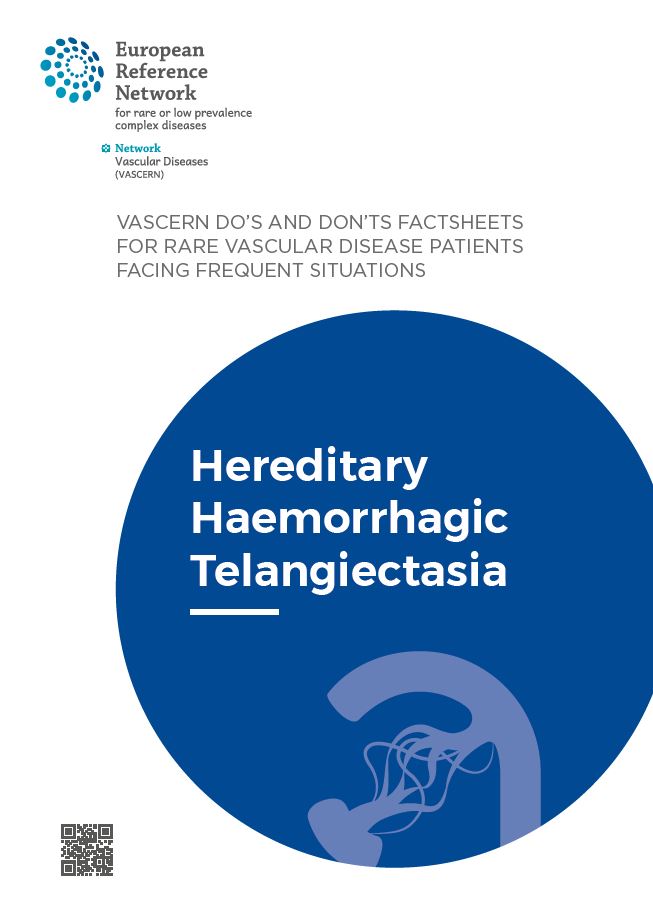
Antiplatelet agents -APA- and anticoagulants
Deep-vein thrombosis pulmonary embolism
Care for patient with multiple traumatic injuries
![]() Factsheet on the topic of Endoscopic exams
Factsheet on the topic of Endoscopic exams
Translations in other EU languages are available here
The HHT-WG published Outcome Measures For the Hereditary Haemorrhagic Telangiectasia (HHT) in the Orphanet Journal of Rare Diseases (OJRD).
This Clinical Position Statement is based on the 5 Outcome Measures selected by members of the VASCERN HHT-WG.
“Outcome Measures were developed and implemented by the HHT Working Group of the European Reference Network for Rare Vascular Diseases (VASCERN), in order to maximise the number of patients receiving good care. The measures specifically target areas where optimal management reduces morbidity and mortality in HHT patients, and were designed to be robust to emerging new evidence. Thresholds are the percentage of patients in particular settings who have been recommended screening, or provided with written advice. The 5 Outcome Measures cover (1) pulmonary AVM screening; (2) written nosebleed advice, (3) assessment of iron deficiency; (4) antibiotic prophylaxis prior to dental and surgical procedures for patients with pulmonary AVMs, and (5) written advice on pregnancy. They are not a blueprint for detailed HHT management, but are suitable for all clinicians to be aware of and implement.
In summary, these 5 Outcome Measures provide metrics to identify healthcare providers of good care, and encourage care improvement by all healthcare providers.”
Read the HHT Outcome measures here
The HHT Registry project will consist of the adaptation of the already existing registry used by our partner HCP, Hospices Civils de Lyon, France, that gathers HHT patient data. The necessary modifications of this database to make it FAIR are now underway.
More information on the Registry WG page here.
Multicenter clinical trials
Effectiveness of Somatostatin Analogues in Patients with hereditary hemorrhagic telangiectasia and symptomatic gastrointestinal bleeding, the SAIPAN-trial: a multicenter, randomized, open-label, parallelgroup, superiority trial: Danish, French, Italian and Netherlands HCPs participating
- Year 1 Collaborative Publications
Executive summary of the 12th HHT international scientific conference.Andrejecsk JW, Hosman AE, Botella LM, Shovlin CL, Arthur HM, Dupuis-Girod S, Buscarini E, Hughes CCW, Lebrin F, Mummery CL, Post MC, Mager JJ. Angiogenesis.2017 Nov 16.doi: 10.1007/s10456-017-9585-2. [Epub ahead of print] PMID: 29147802
Long-term outcomes of patients with pulmonary arteriovenous malformations considered for lung transplantation, compared with similarly hypoxaemic cohorts. Shovlin CL, Buscarini E, Hughes JMB, Allison DJ, Jackson JE. BMJ Open Respir Res. 2017 Oct 13;4(1):e000198. doi: 10.1136/bmjresp-2017-000198. eCollection 2017.PMID: 29071074
*The Lung in Hereditary Hemorrhagic Telangiectasia. Dupuis-Girod S, Cottin V, Shovlin CL. Respiration. 2017;94(4):315-330. doi: 10.1159/000479632. Epub 2017 Aug 30. PMID: 28850955
Response to Bevacizumab for the treatment of Rendu-Osler disease-A note of caution.Dupuis-Girod S, Buscarini E.Liver Int. 2017 Jun;37(6):928. doi: 10.1111/liv.13385. No abstract available. PMID: 28544692
- Year 2 Collaborative Publications
*Safety of thalidomide and bevacizumab in patients with hereditary hemorrhagic telangiectasia. Buscarini E, Botella LM, Geisthoff U, Kjeldsen AD, Mager HJ, Pagella F, Suppressa P, Zarrabeitia R, Dupuis-Girod S, Shovlin CL; VASCERN-HHT. Orphanet J Rare Dis. 2019 Feb 4;14(1):28. doi: 10.1186/s13023-018-0982-4. PMID: 30717761 Orphanet J Rare Dis. 2018 Aug 15;13(1):136. doi: 10.1186/s13023-018-0850-2.
*European Reference Network For Rare Vascular Diseases (VASCERN) Outcome Measures For Hereditary Haemorrhagic Telangiectasia (HHT). Shovlin CL1,2, Buscarini E3, Kjeldsen AD4, Mager HJ5, Sabba C6, Droege F7, Geisthoff U7,8, Ugolini S9, Dupuis-Girod S10,11. Haematologica. 2019 Feb;104(2):e85-e86. doi: 10.3324/haematol.2018.209791.
*Prevention of serious infections in hereditary hemorrhagic telangiectasia: roles for prophylactic antibiotics, the pulmonary capillaries-but not vaccination. Shovlin C1, Bamford K2, Sabbà C3, Mager HJ4, Kjeldsen A5, Droege F6, Buscarini E7, Dupuis-Girod S8; VASCERN HHT. Haematologica. 2019 Feb;104(2):e85-e86. doi: 10.3324/haematol.2018.209791. No abstract available.
- Year 3-5 Collaborative Publications
*Safety of direct oral anticoagulants in patients with hereditary hemorrhagic telangiectasia. Shovlin CL, Millar CM, Droege F, Kjeldsen A, Manfredi G, Suppressa P, Ugolini S, Coote N, Fialla AD, Geisthoff U, Lenato GM, Mager HJ, Pagella F, Post MC, Sabbà C, Sure U, Torring PM, Dupuis-Girod S, Buscarini E; VASCERN-HHT. Orphanet J Rare Dis. 2019 Aug 28;14(1):210. doi: 10.1186/s13023-019-1179-1.
*European Reference Network for Rare Vascular Diseases (VASCERN) position statement on cerebral screening in adults and children with hereditary haemorrhagic telangiectasia (HHT). Eker OF, Boccardi E, Sure U, Patel MC, Alicante S, Alsafi A, Coote N, Droege F, Dupuis O, Fialla AD, Jones B, Kariholu U, Kjeldsen AD, Lefroy D, Lenato GM, Mager HJ, Manfredi G, Nielsen TH, Pagella F, Post MC, Rennie C, Sabbà C, Suppressa P, Toerring PM, Ugolini S, Buscarini E, Dupuis-Girod S, Shovlin CL. Orphanet J Rare Dis. 2020 Jun 29;15(1):165. doi: 10.1186/s13023-020-01386-9. PMID: 32600364
Second International Guidelines for the Diagnosis and Management of Hereditary Hemorrhagic Telangiectasia. Faughnan ME, Mager JJ, Hetts SW, Palda VA, Lang-Robertson K, Buscarini E, Deslandres E, Kasthuri RS, Lausman A, Poetker D, Ratjen F, Chesnutt MS, Clancy M, Whitehead KJ, Al-Samkari H, Chakinala M, Conrad M, Cortes D, Crocione C, Darling J, de Gussem E, Derksen C, Dupuis-Girod S, Foy P, Geisthoff U, Gossage JR, Hammill A, Heimdal K, Henderson K, Iyer VN, Kjeldsen AD, Komiyama M, Korenblatt K, McDonald J, McMahon J, McWilliams J, Meek ME, Mei, Zahav M, Olitsky S, Palmer S, Pantalone R, Piccirillo JF, Plahn B, Porteous MEM, Post MC, Radovanovic I, Rochon PJ, Rodriguez-Lopez J,– Sabba C, Serra M, Shovlin C, Sprecher D, White AJ, Winship I, Zarrabeitia R. Ann Intern Med. 2020 Dec 15;173(12):989-1001. doi: 10.7326/M20-1443. Epub 2020 Sep 8. PMID: 32894695.
*The European rare disease network for HHT frameworks for management of hereditary haemorrhagic telangiectasia in general and speciality care. Shovlin CL, Buscarini E, Sabbà C, Mager HJ, Kjeldsen AD, Pagella F, Sure U, Ugolini S, Toerring PM, Suppressa P, Rennie C, Post MC, Patel MC, Nielsen TH, Manfredi G, Lenato GM, Lefroy D, Kariholu U, Jones B, Fialla AD, Eker OF, Dupuis O, Droege F, Coote N, Boccardi E, Alsafi A, Alicante S, Dupuis-Girod S. Eur J Med Genet. 2021 Nov 1:104370. doi: 10.1016/j.ejmg.2021.104370. Online ahead of print.
PMID: 34737116
*European Reference Network for Rare Vascular Diseases (VASCERN): When and how to use intravenous bevacizumab in Hereditary Haemorrhagic Telangiectasia (HHT)? Dupuis-Girod S, Shovlin CL, Kjeldsen AD, Mager HJ, Sabba C, Droege F, Fargeton AE, Fialla AD, Gandolfi S, Hermann R, Lenato GM, Manfredi G, Post MC, Rennie C, Suppressa P, Sure U; ePag group, Buscarini E. Eur J Med Genet. 2022 Aug 5;65(10):104575. doi: 10.1016/j.ejmg.2022.104575. Epub ahead of print. PMID: 35940549.
*=VASCERN acknowledged












